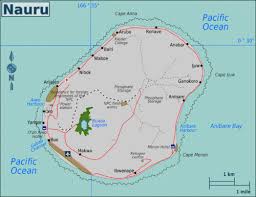Make love, not war

With Joe Hockey eager to let us know how much we are all spending on those bludging single mothers, I thought it would be worth letting Joe’s cleaner know how much he is spending on defence.
After the 2014 budget, the Australian Strategic Policy Institute released a paper showing that
“ASPI Defence Budget Brief 2014-15: The Cost of Defence is eighty million, two hundred & eighty-one thousand, three hundred & ninety-one dollars & seventy-eight cents per day.”
That’s about $1250 per man, woman and child every year – $3750 for Hockey’s single mum with two kids.
In real terms, the year-on-year increase given to defence in Hockey’s first budget amounted to a 6% boost. The increase would have been larger still but for extra funding provided for 2013-14 by the Gillard ($359 million) and Abbott ($500 million) governments.
The paper points out that this large boost to defence in what was otherwise an austerity budget came at a price.
“the government clearly demonstrated a strong commitment to defence in the 2014 budget; every extra dollar allocated to Defence meant deeper cuts to social programs and higher increases to taxes than would have otherwise been the case to achieve its fiscal goals.”
They even suggest that they will have difficulty spending the money that is being lavished upon them with Abbott’s goal to increase annual defence spending to 2% of GDP in 2023-24.
“investment in new equipment will grow from $3.6 billion this year to $6.1 billion. Experience shows that such rapid growth will be very difficult to achieve.
On the basis of projected economic growth, 2% of GDP will amount to around $52 billion in 2023-24, equivalent to almost $42 billion in today’s terms. There’ll be around $112 billion available over the next decade for capital equipment. In comparison, we’ve spent just $66 billion over the decade just past (both figures expressed in today’s dollars taking account of inflation).
…most of the public discussion has been focused on the poor state of the books left by their predecessors. It’s entirely likely, indeed probable, that they haven’t fully worked through the consequences of spending 2% of GDP in 2023.
The risk in all of this is that proposals of diminishing worth – for both extra personnel and new equipment – will arise. In a funding regime driven by GDP share rather than by balancing costs and benefits, there’s no lower limit on the marginal worth of proposals. Such is the nature of a policy based on input costs rather than capability outcomes.”
After such largesse last year, and the government looking for savings this year to fund their spending spree on Tony’s tradies and nannies, as well as the release of a Defence White paper later this year, one might have assumed that defence might be an area that would be on hold…but no.
This year the government have gone with the glossy brochure approach to the budget and Kevin Andrew’s pamphlet provides the following figures from budget 2015-16:
“The Government will provide Defence with $31.9 billion in 2015–16 and $132.6 billion over the Forward Estimates.
This is an increase of $9.9 billion over the Forward Estimates when compared to the 2014–15 Budget and represents record expenditure on Defence.
The 2015–16 Budget delivers on the Government’s promise to grow, rather than cut, the Defence budget. The Government remains firm on its commitment to increase Defence spending to two per cent of GDP within a decade.
Key measures in the 2015–16 Budget include:
Operations – the Government has agreed to additional funding of $752.7 million in the 2015–16 Budget and $802.4 million over the Forward Estimates. This takes total operations funding to $910.7 million in 2015–16 and $1,071.8 million over the Forward Estimates.
In 2013–14, the Government approved over $17 billion in capability projects, including additional 58 Joint Strike Fighter aircraft.
Since the last Budget, the Government has approved a further $5 billion in new capital investment, including:
- two additional Boeing C-17A Globemaster III aircraft to bolster the Royal Australian Air Force’s existing fleet of six strategic lift aircraft
- the new Helicopter Aircrew Training System – a fully integrated modern training environment preparing aircrew for the new generation of advanced combat helicopters
- new and improved personal protective equipment including new-generation body armour
- state-of-the-art Special Forces vehicles being assembled in Australia
- the final elements required to complete the transformation of Army’s artillery capability to a state-of-the-art digital system
- deployable air traffic control systems to better support humanitarian and disaster relief operations
- transportable satellite terminals that allow our deployed forces to use the Wideband Global Satellite system to communicate back to Australia
- first pass for the future Mounted Combat Reconnaissance Capability that will replace the workhorse Australian Light Armoured Vehicle (ASLAV) reconnaissance vehicle.
Earlier this year, the Government announced the acquisition strategy for the Future Submarine Program. This Program is the largest Defence procurement program in Australia’s history and represents an investment in the order of $50 billion in Australia’s security. The Government expects that significant work will be undertaken in Australia during the build phase of the future submarine including combat system integration, design assurance and land based testing.
Sir John Monash Centre – the Government has previously announced that it would provide initial funding of $2.8 million in the Budget to commence the establishment of an Australian interpretive centre at Villers-Bretonneux, near the site of the Australian National Memorial on the Somme. The Government will commit a further $18 million in 2015–16 and $89 million in the Forward Estimates to complete the project. The interpretive centre will provide a focal point for Australian visitors and tell the proud story of the soldiers who served on the Western Front battlefields during World War I.”
When you consider these billions do not include all the money spent on border protection, national security, intelligence organisations, the AFP, metadata retention, the domestic ‘war on terror’, ANZAC Day celebrations etc, the figures are staggering.
Maybe Joe Hockey’s cleaner could strike a blow for we mothers and tell Joe it is better, and far cheaper, to make love, not war.
Like what we do at The AIMN?
You’ll like it even more knowing that your donation will help us to keep up the good fight.
Chuck in a few bucks and see just how far it goes!
Your contribution to help with the running costs of this site will be gratefully accepted.
You can donate through PayPal or credit card via the button below, or donate via bank transfer: BSB: 062500; A/c no: 10495969










